#WorkplaceHarmony
Explore tagged Tumblr posts
Text
Unlocking Team Synergy with MBTI 🔍
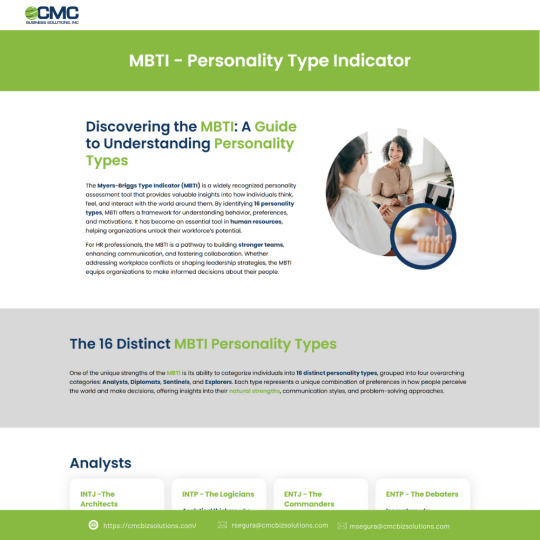
Ever wondered why some teams just click while others struggle? 🤔 The secret might lie in understanding personality types! The Myers-Briggs Type Indicator (MBTI) offers a window into individual preferences, helping teams communicate better and work more cohesively.
Imagine pairing a visionary INTJ with an empathetic ENFP – the strategic planning meets enthusiastic execution! 🌟 By recognizing and valuing these differences, teams can harness diverse strengths and achieve greater success.
Implementing the MBTI isn't about putting people in boxes but about unlocking potential. With the right approach, HR professionals can use these insights to foster growth, resolve conflicts, and build stronger teams.💪
Ready to dive into the world of personality types and transform your workplace dynamics? Let's embark on this journey together! 🚀
0 notes
Photo

What’s something that seems trivial today that people might cherish in the future?
#AuthenticConnections#FutureCherish#MeaningfulMoments#CreativityInWorkspace#TrivialToTreasure#SpringVibes#HumanExperience#WorkplaceHarmony#CaptureTheMoment#InspirationEveryday#ConnectGenuinely#MotivationDaily#ExploreTogether#InnovateAndCreate#PositiveChange#CommunityMatters#GrowthMindset#CollaborationOverCompetition#FutureFocused#EmbraceTheJourney
0 notes
Text
Effective Workplace Conflict Resolution Services for Business Harmony

At Central HR, we provide effective workplace conflict resolution services designed to address conflicts before they escalate. Our trained mediators work with employees to identify underlying issues, facilitate communication, and reach mutual agreements that benefit all parties. By resolving conflicts in a timely and fair manner, we help businesses maintain a harmonious work environment, reduce workplace stress, and improve team dynamics. Let us help you create a workplace where conflicts are handled with professionalism and respect.
1 note
·
View note
Text
Labour Discipline Management Services for Corporates: Ensuring Compliance and Workplace Harmony

In today’s evolving corporate landscape, maintaining labour discipline is vital for ensuring a structured and harmonious work environment. Labour discipline involves adherence to workplace policies, statutory regulations, and ethical standards, contributing to legal compliance, employee productivity, and organizational success. Effective labour discipline management helps businesses prevent legal disputes, enhance operational efficiency, and foster a positive workplace culture.
Understanding Labour Discipline in Corporate Workplaces
Labour discipline encompasses the policies and procedures organizations implement to regulate employee conduct, ensure compliance with labour laws, and manage workplace disputes. It covers key areas such as employee behavior, attendance, performance management, grievance handling, and disciplinary actions for misconduct.
Key Components of Labour Discipline Management
Workplace Policies and Code of Conduct
Establishing clear guidelines on employee behavior, attendance, and workplace ethics
Ensuring employees understand company policies and consequences for non-compliance
Grievance Redressal Mechanism
Implementing a structured framework for handling employee grievances
Ensuring fair and transparent dispute resolution processes
Disciplinary Actions and Misconduct Management
Defining procedures for addressing employee misconduct
Conducting impartial inquiries and enforcing proportionate disciplinary measures
Legal Compliance and Labour Law Adherence
Aligning workplace policies with labour laws such as the Industrial Disputes Act and Shops and Establishments Act
Conducting regular compliance audits to mitigate legal risks
Employee Training and Awareness
Organizing training programs on workplace ethics and compliance
Promoting a culture of accountability and professional discipline
Challenges in Labour Discipline Management
Corporates often encounter difficulties in maintaining effective labour discipline due to:
Inconsistent enforcement of policies across departments
Resolving disputes while maintaining workplace harmony
Keeping up with evolving labour laws and regulations
Managing disciplinary actions without affecting employee morale
How Professional Labour Discipline Management Services Help
Engaging professional labour discipline services can help businesses address these challenges efficiently. These services provide:
Expert Guidance on Labour Laws: Ensuring compliance with statutory regulations and legal requirements
Dispute Resolution Assistance: Supporting grievance handling, mediation, and arbitration
Policy Development and Implementation: Designing tailored workplace policies aligned with business goals and legal mandates
Employee Awareness Initiatives: Conducting training sessions on compliance and workplace discipline
Compliance Audits and Risk Mitigation: Performing regular assessments to ensure adherence to labour laws
Why Choose Our Labour Discipline Management Services?
We offer comprehensive solutions tailored to corporate needs, including:
Development of workplace policies and disciplinary frameworks
Expert consultation on grievance handling and legal compliance
Support in conducting fair and legally compliant disciplinary actions
Employee engagement programs to foster a positive work culture
Compliance audits to minimize legal risks and enhance workplace harmony
Conclusion
Labour discipline plays a crucial role in corporate governance, contributing to compliance, workplace harmony, and overall business growth. By leveraging professional labour discipline management services, businesses can effectively regulate employee relations, prevent disputes, and create a productive work environment.
For expert support in managing labour discipline, contact us today!
#LabourDiscipline#WorkplaceCompliance#CorporateGovernance#HRPolicies#LabourLaw#EmployeeRelations#WorkplaceEthics#DisputeResolution#ComplianceServices#LabourManagement#BusinessCompliance#HRConsulting#CorporateLegal#WorkplaceHarmony#ProfessionalServices
1 note
·
View note
Text
The Development of Personnel Management and Industrial Relations: A Historical Perspective
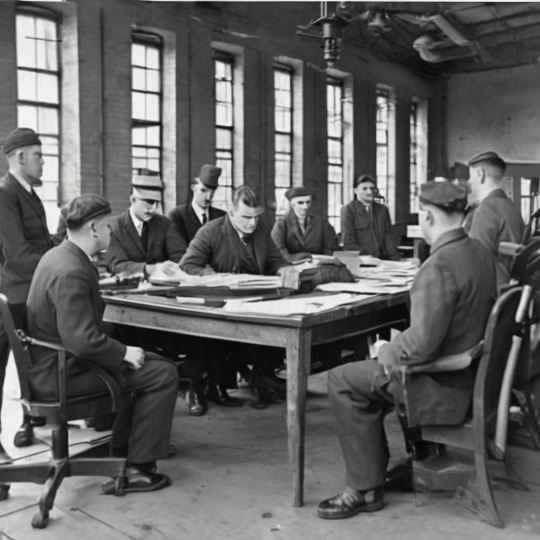
The fields of personnel management and industrial relations have undergone considerable evolution, influenced by social, economic, and political factors across various countries. A comparative look at the United Kingdom and the United States provides insight into the development of these disciplines from a historical perspective, with differences that reflect each country’s approach to labor and management.
The Role of Personnel Management in Britain
In Britain, personnel management developed as a field distinct from industrial relations, with a greater focus on human resources and labor management within organizations. Early attention to personnel management in Britain is often attributed to the efforts of organizations like the Chartered Institute of Personnel and Development (CIPD). Originally known as the Chartered Institute of Personnel and Development (CIPD), this institution was established to professionalize and formalize the practice of personnel management, emphasizing skills in managing and developing staff.
British universities, compared to other European nations, invested significantly in research and teaching related to human relations and industrial relations, with relatively limited focus on labor law. This reflects the British context, where employment regulations were traditionally light and less reliant on legal frameworks. Industrial relations in Britain, therefore, were often focused on labor-management relations, specifically in terms of union relationships and collective bargaining. However, as noted by Gospel (1992), beginning in the mid-1960s, there was a shift in focus, with increasing attention on management practices. This shift coincided with growing complexities in labor relations and the need for more refined approaches to managing human resources within organizations.
Human Relations and Industrial Relations in the United States
In contrast, the United States experienced a boom in human resources management (HRM) broadly defined during the period from 1945 to 1965, while personnel management itself remained relatively stagnant. The term "industrial relations" in America continued to be applied broadly, encompassing all facets of employment, including personnel. As the country emerged from World War II, the spread of unionism spurred the establishment of numerous industrial relations centers and institutes at universities, many of which had been absent before the war. Kaufman (2004) highlights that the impetus for these programs was primarily the rapid expansion of unions and the ensuing challenges around collective bargaining, dispute resolution, and contract administration.
Furthermore, industrial relations in the U.S. saw a rise in interest around human relations within industry, driven by an understanding that the well-being of employees significantly influenced organizational outcomes. With the focus on management and organizational design, many American universities began exploring human relations principles to foster a healthier work environment and improve productivity. The expansion of industrial relations programs in this period reflected a broader acknowledgment of the importance of employee welfare and workplace harmony.
Comparative Development and Contemporary Implications
The historical context of personnel management and industrial relations in both Britain and the United States provides a foundation for understanding contemporary human resources practices. Britain’s approach, rooted in managing union relations and emphasizing limited legal intervention, contrasts with the broader American view of industrial relations as encompassing all aspects of employment. This divergence reflects the unique labor histories and economic policies in each country and continues to influence contemporary HRM practices and policies.
Overall, the development of personnel management and industrial relations underscores the dynamic nature of labor and employment practices. As organizations continue to adapt to changing economic and social landscapes, the historical insights from Britain and the United States remain valuable in shaping effective human resources strategies today.
Unseen Influences: The Evolution of Personnel Management and Industrial Relations in Britain and the United States

One lesser-known influence on the evolution of industrial relations and personnel management was the impact of social changes, especially in the post-war period. In both Britain and the United States, societal shifts — such as the civil rights movement, the growing role of women in the workforce, and changing attitudes towards work-life balance — influenced the development of HR practices. Companies began to adopt policies that recognized diversity and inclusion, though these were initially seen as progressive changes rather than standard practices. Over time, however, these movements began to reshape HR policies and company cultures, laying the groundwork for what would eventually become core elements of modern personnel management.
Similarly, technological advancements brought new challenges and opportunities to personnel management. The introduction of computers and automation in the workplace during the mid-20th century changed the nature of jobs, influencing workforce demands and reshaping traditional roles. Management had to adapt by developing strategies for retraining employees, managing redundancies, and addressing fears around job security. These shifts underscored the need for personnel management to evolve and respond not only to economic and political factors but also to the fast-paced changes in technology and society.
A Broader Perspective on Industrial Relations
In Britain, industrial relations traditionally focused on union and labor relations, yet there were broader aspects tied to economic and political frameworks that shaped the scope of these relations. For instance, during the economic struggles of the 1970s, Britain’s labor market faced significant pressures, which led to widespread strikes and industrial action. These events forced both businesses and the government to consider more robust HR policies and labor relations frameworks to manage worker dissatisfaction and improve productivity. However, these policies were often seen as reactive rather than proactive, contrasting with some approaches in the United States, where industrial relations were sometimes designed to encompass long-term strategic goals for employee engagement.
Another unknown aspect is the role of government influence. In the U.S., federal policies during the New Deal era had established a strong foundation for worker protections and union rights. This continued into the post-war period, where government-backed initiatives played a role in shaping the HR and industrial relations landscape. For example, the establishment of the National Labor Relations Board (NLRB) provided a structured approach to handling labor disputes and collective bargaining, making industrial relations a more formalized field. In Britain, however, government intervention was historically lighter, with a tendency to let market forces dictate labor relations. It was only during times of economic crisis, such as the 1970s, that the government took a more active role in mediating labor relations.
Unknown but Significant: The Role of Educational Institutions
Educational institutions in both Britain and the U.S. played a crucial, albeit often unrecognized, role in developing personnel management and industrial relations. In the United States, industrial relations programs expanded significantly after World War II, largely due to the influence of renowned universities such as Cornell and MIT, which became leading centers for labor studies and personnel management. The work done in these academic institutions contributed to developing management theories and best practices that would later influence mainstream HR practices.
In Britain, the rise of personnel management as a recognized field was supported by academic institutions, though on a smaller scale. The relatively limited number of programs dedicated to HR and industrial relations resulted in fewer research advancements compared to the U.S. However, British institutions focused on practical applications, integrating research with real-world labor issues, particularly as union influence grew. By collaborating with industries, British universities managed to develop HR theories that, while not as widely published as those in the U.S., were nonetheless instrumental in shaping local practices in personnel management and labor relations.
Conclusion
The unseen aspects of the development of personnel management and industrial relations reveal the complexity of these fields and the multitude of influences that shaped them. From social and technological changes to the subtle yet significant role of educational institutions, the history of personnel management and industrial relations is rich with influences that are often overlooked. Understanding these unknown elements offers a more comprehensive perspective on how HR practices have evolved and highlights the importance of adaptability in response to both internal and external factors.
Looking forward, the field of HR continues to evolve, incorporating lessons from these historical contexts while adapting to new challenges, such as the integration of artificial intelligence, globalization, and the continued demand for a more inclusive and equitable workplace. By appreciating the known and unknown influences on personnel management and industrial relations, organizations and HR professionals are better equipped to meet the demands of a changing world and build more resilient and forward-looking employment practices.
#PersonnelManagement#IndustrialRelations#HistoricalPerspective#UK#US#LaborManagement#HumanResources#UnionRelations#CollectiveBargaining#HumanRelations#OrganizationalDesign#EmployeeWelfare#WorkplaceHarmony#HRMPractices#LaborHistory#EconomicPolicies#ContemporaryImplications#ComparativeDevelopment#CharteredInstituteOfPersonnelAndDevelopment (CIPD)#HumanResourcesManagement (HRM)#IndustrialRelationsCenters#Universities#LaborLaw#EmploymentRegulations#ManagementPractices#Productivity#WorkEnvironment
1 note
·
View note
Text
0 notes
Text
Green-Eyed Monsters: How Envy and Jealousy Fuel Workplace Conflicts
In the corporate world, ambition, and competition often drive success. However, these same forces can also give rise to negative emotions like envy and jealousy, which, if left unchecked, can fuel workplace conflicts and undermine team cohesion. Understanding the psychological roots and impacts of these emotions is crucial for creating a harmonious and productive work environment.
The Psychological Roots of Envy and Jealousy
Envy and jealousy are complex emotions that stem from comparisons and perceived inequalities. Envy arises when an individual lacks something that another possesses and desires it, often accompanied by feelings of inferiority and resentment. Jealousy, on the other hand, involves the fear of losing something valuable, such as status or relationships, to a rival.
In the workplace, these emotions are triggered by various factors, including:
Recognition and Rewards: Disparities in recognition, promotions, and rewards can spark envy among employees who feel overlooked despite their efforts.
Opportunities and Resources: Unequal access to opportunities for growth and development can breed jealousy among those who feel sidelined.
Peer Comparisons: Constantly comparing oneself to colleagues can exacerbate feelings of inadequacy and competition, leading to envy.
The Impact of Envy and Jealousy on Workplace Dynamics
Unchecked envy and jealousy can have far-reaching consequences on workplace dynamics and overall productivity:
Increased Conflict: Envious and jealous individuals may engage in disruptive behaviours, such as gossiping, backstabbing, or undermining colleagues, leading to a toxic work environment.
Decreased Collaboration: When employees are driven by envy, they may become less willing to collaborate, share information, or support their teammates, hindering collective progress.
Lower Morale: A workplace rife with envy and jealousy can lead to decreased morale, job satisfaction, and engagement, resulting in higher turnover rates.
Erosion of Trust: Persistent envy and jealousy can erode trust among team members, making it difficult to build strong, cohesive relationships.
Strategies for Addressing Envy and Jealousy in the Workplace
To foster a positive work environment, it's essential to address envy and jealousy proactively. Here are some strategies to consider:
Promote Transparency and Fairness
Ensure that recognition, rewards, and opportunities are distributed fairly and transparently. Clear communication about criteria and decision-making processes can help mitigate feelings of envy.
Encourage Open Communication
Create an open and supportive environment where employees feel comfortable discussing their concerns and emotions. Regular feedback sessions and one-on-one meetings can help identify and address issues early on.
Foster a Culture of Collaboration
Emphasize the importance of teamwork and collaboration. Encourage employees to celebrate each other's successes and work together towards common goals.
Provide Professional Development Opportunities
Offer equal access to training, mentorship, and career development programs. This can help employees feel valued and reduce feelings of jealousy.
Model Positive Behavior
Leaders should model positive behavior by demonstrating empathy, fairness, and respect. Leading by example can set the tone for a supportive and inclusive workplace culture.
Address Issues Promptly
When envy or jealousy-related conflicts arise, address them promptly and constructively. Mediation and conflict resolution techniques can help resolve issues before they escalate.
Envy and jealousy are natural human emotions that can have significant impacts on workplace dynamics if not managed properly. By understanding the psychological roots of these emotions and implementing strategies to address them, organizations can create a more harmonious and productive work environment. Fostering a culture of transparency, collaboration, and mutual respect can help mitigate the negative effects of envy and jealousy, leading to a more engaged and cohesive workforce.
Embracing these strategies will not only improve individual well-being but also enhance overall organizational success. After all, a workplace free from the shadows of envy and jealousy is one where everyone can thrive.

#sandhayati#WorkplaceCulture#Leadership#TeamDynamics#EmployeeWellbeing#CorporatePsychology#WorkplaceConflict#ProfessionalGrowth#MentalHealth#WorkplaceHarmony#OfficePolitics#EmployeeEngagement#LeadershipSkills#BusinessSuccess#WorkplaceTransparency#ConflictResolution#EmployeeMotivation#OrganizationalBehavior#WorkplaceWellness#WorkplaceRelations#CorporateLeadership
0 notes
Text
Kʼicheʼ Spirituality: Building Corporate Cultures of Respect and Integrity

Overview
Kʼicheʼ spirituality, deeply rooted in the sacred text of the Popol Vuh, offers timeless wisdom on creating harmonious and ethical communities. Central to this spirituality are principles of respect, integrity, and a profound connection to nature and each other. In the context of modern corporate cultures, these principles can be transformative, fostering environments where respect and integrity are not just ideals but daily practices. By integrating Kʼicheʼ spiritual principles into the corporate world, leaders can cultivate workplaces that prioritize ethical behaviour, mutual respect, and sustainability.
Spiritual and Ethical Principles from Kʼicheʼ Spirituality
Respect for All Beings: Kʼicheʼ spirituality emphasizes respect for all forms of life. This respect extends beyond human interactions to include animals, plants, and the earth itself. In a corporate setting, this principle encourages respect for every employee, customer, and stakeholder, as well as responsible environmental practices.
Integrity in Actions: The Popol Vuh highlights the importance of integrity, urging individuals to act honestly and ethically. In business, integrity builds trust, strengthens relationships, and ensures long-term success.
Community and Collaboration: The Kʼicheʼ people value community and collective well-being. Modern businesses can draw from this to foster teamwork, support, and a sense of belonging among employees.
Sustainable Practices: Reverence for nature in Kʼicheʼ spirituality translates to sustainable business practices. Companies that prioritize sustainability not only protect the environment but also enhance their reputation and ensure long-term viability.
Spiritual Connection and Mindfulness: Kʼicheʼ spirituality encourages mindfulness and a deep connection to the spiritual world. Corporate leaders can incorporate mindfulness practices to enhance focus, reduce stress, and foster a positive work environment.
Practical Toolkit for Incorporating Ethical Principles
To help corporate leaders integrate these spiritual and ethical principles into their daily routines, the following practical toolkit provides actionable steps and strategies:
Morning Reflection Ritual
Objective: Start the day with a clear, focused, and respectful mindset.
Quiet Time: Spend 5-10 minutes in silence or meditation, reflecting on the values of respect, integrity, and community.
Gratitude Practice: Write down three things you are grateful for, focusing on aspects related to your work and team.
Intention Setting: Set a positive intention for the day, such as "Today, I will lead with respect and integrity."
Ethical Decision-Making Framework
Objective: Ensure that decisions align with ethical and spiritual values.
Assess Impact: Consider the impact of your decision on all stakeholders, including employees, customers, and the environment.
Seek Counsel: Discuss major decisions with a trusted advisor or mentor who shares your ethical values.
Reflect on Values: Ask yourself if the decision aligns with your core values and the principles of Kʼicheʼ spirituality, such as community welfare and respect for nature.
Team Building Activities
Objective: Foster a sense of community and collaboration.
Weekly Check-Ins: Hold regular team meetings where everyone can share successes, challenges, and support each other.
Collaborative Projects: Encourage cross-departmental projects to build inter-team relationships and leverage diverse skill sets.
Community Service: Organize volunteer opportunities that allow your team to give back to the community, reinforcing the value of service.
Environmental Responsibility Practices
Objective: Promote sustainability and respect for nature.
Green Office Initiatives: Implement practices such as recycling, energy-saving measures, and reducing single-use plastics.
Sustainable Sourcing: Choose suppliers and partners who prioritize sustainability.
Environmental Goals: Set and track environmental goals, such as reducing your company's carbon footprint.
Resilience Building Techniques
Objective: Cultivate resilience and perseverance in the face of challenges.
Stress Management Workshops: Offer workshops on stress management techniques like mindfulness, yoga, and breathing exercises.
Mentorship Programs: Establish mentorship programs to provide support and guidance for employees facing challenges.
Positive Reinforcement: Celebrate successes and milestones to build a positive and resilient organizational culture.
Incorporating Daily Practices
Mindful Leadership Meetings: Start each meeting with a moment of mindfulness or a brief reflection on the company’s mission and values.
Open-Door Policy: Foster open communication by making yourself accessible to your team, encouraging them to share their thoughts and concerns.
Personal Development Plans: Encourage continuous learning and personal growth by supporting professional development opportunities for your team.
Evaluation and Feedback
Objective: Continuously improve the integration of spiritual principles in leadership practices.
Regular Feedback: Solicit feedback from your team on the effectiveness of these practices and areas for improvement.
Self-Assessment: Regularly reflect on your own leadership practices and seek ways to better align with spiritual principles.
Adjust and Adapt: Be open to adjusting your strategies based on feedback and changing circumstances.
Conclusion
Building corporate cultures of respect and integrity inspired by Kʼicheʼ spirituality involves embracing principles of respect for all beings, integrity in actions, community and collaboration, sustainable practices, and mindfulness. By integrating these values into corporate leadership, businesses can create environments that prioritize the well-being of all stakeholders, fostering trust, collaboration, and long-term sustainability.
The practical toolkit provided offers concrete steps to begin this transformative journey. Starting the day with reflection, making decisions with ethical frameworks, fostering community through team building, committing to environmental responsibility, and building resilience are all ways to incorporate these ancient principles into modern business practices.
By adopting these strategies, corporate leaders can ensure that the wisdom of Kʼicheʼ spirituality continues to inspire and guide them, helping to build companies that not only succeed financially but also contribute positively to society and the environment. This holistic approach to leadership can transform the corporate world, making it more ethical, sustainable, and aligned with the deeper values of humanity.
Implementing the Toolkit
Daily Routine:
Morning Reflection: Begin your day with a quiet time to focus on respect and integrity.
Team Check-Ins: Regularly connect with your team to foster a sense of community.
Mindfulness Moments: Incorporate brief mindfulness exercises throughout the day to maintain focus and reduce stress.
Decision-Making:
Ethical Framework: Use the ethical decision-making framework to guide important choices.
Consultation: Regularly seek advice from mentors or ethical advisors.
Environmental Practices:
Sustainability Initiatives: Implement green office practices and set environmental goals.
Sustainable Sourcing: Partner with environmentally conscious suppliers.
Resilience Building:
Workshops and Programs: Offer stress management workshops and establish mentorship programs.
Celebrate Success: Recognize and celebrate team achievements to build a positive culture.
By consistently applying these practices, corporate leaders can create a workplace that not only thrives on respect and integrity but also embodies the holistic and ethical values found in Kʼicheʼ spirituality.
The Myth of the Hero Twins: Hunahpú and Xbalanqué
The Popol Vuh tells the story of the Hero Twins, Hunahpú and Xbalanqué, who embody the principles of respect, integrity, and community. The twins were skilled ballplayers, and their games disturbed the Lords of Xibalba, the underworld. Enraged, the Lords summoned the twins to the underworld to face a series of deadly trials.
Despite the challenges, the twins displayed immense respect for each other and the natural world. They navigated the trials with integrity, using their wit and courage to outsmart the Lords of Xibalba. Their bond as brothers and their commitment to each other’s well-being exemplified the power of community and collaboration.
In one of their trials, the twins were required to retrieve flowers from the House of Bats, a dangerous task that seemed impossible. Through teamwork and strategic thinking, they succeeded where others had failed. This trial highlighted their ability to work together and respect each other’s strengths, crucial qualities for overcoming adversity.
Ultimately, Hunahpú and Xbalanqué triumphed over the Lords of Xibalba, restoring balance and harmony. They ascended to the sky, becoming the sun and the moon, eternal symbols of their victory and the enduring values of respect, integrity, and community.
This myth from the Popol Vuh illustrates how respect for others, integrity in actions, and a strong sense of community can lead to triumph over adversity. It teaches modern corporate leaders the importance of collaboration, ethical behaviour, and mutual respect in building successful and harmonious organizations.
#Leadership#BusinessEthics#CorporateCulture#Teamwork#Integrity#RespectInBusiness#AncientWisdom#SustainableBusiness#PopolVuh#HeroTwins#KicheSpirituality#EthicalLeadership#WorkplaceHarmony#CulturalHeritage#MindfulLeadership
0 notes
Text

Navigating the Maze of Employer-Employee Dynamics: Unlocking Success with "Boss & Me" by Meera Mandakini
In today's dynamic work environment, the relationship between employers and employees plays a pivotal role in organizational success. It's a delicate dance of authority, responsibility, and mutual respect. However, this relationship isn't always smooth sailing. Challenges often arise, ranging from communication issues to power struggles. So, how can both parties navigate these challenges and foster a healthy, productive dynamic?
Enter "Boss & Me" by Meera Mandakini, a comprehensive guidebook that delves deep into the nuances of the employer-employee relationship. Drawing from her extensive experience in human resources and organizational psychology, Mandakini offers invaluable insights and practical strategies to bridge the gap between bosses and their teams.
One of the key challenges addressed in "Boss & Me" is communication breakdowns. Misunderstandings, unclear expectations, and lack of feedback can all contribute to friction in the workplace. Mandakini provides actionable tips for both employers and employees to enhance their communication skills, fostering transparency and trust.
Moreover, Mandakini explores the issue of power dynamics within organizations. Employees may feel disempowered or marginalized, while employers struggle to balance authority with empathy. By understanding each other's perspectives and embracing a collaborative approach, both parties can work towards a more equitable and inclusive work environment.
But "Boss & Me" isn't just about identifying problems—it's about finding solutions. Mandakini offers a toolkit of relationship management techniques that empower employers and employees to cultivate strong, mutually beneficial partnerships. From conflict resolution strategies to performance management best practices, each chapter is filled with practical advice backed by real-world examples.
In essence, "Boss & Me" is more than just a book—it's a roadmap to success for anyone navigating the complex terrain of the modern workplace. Whether you're a seasoned executive or a recent hire, this book has something to offer. By embracing the principles outlined in "Boss & Me," you can transform your professional relationships and propel your career to new heights.
Don't miss out on the opportunity to revolutionize your approach to the employer-employee relationship. Order your copy of "Boss & Me" today on Amazon and join the ranks of those unlocking the secrets to workplace harmony and productivity.
#BossAndMe#WorkplaceSuccess#EmployerEmployeeRelations#CommunicationSkills#PowerDynamics#LeadershipDevelopment#ProfessionalGrowth#TeamCollaboration#ConflictResolution#CareerAdvice#OrganizationalCulture#WorkplaceHarmony#BookRecommendation#MeeraMandakini#amazon#bestsellerbook
0 notes
Video
tumblr
This is the short version of the Embrace Work affirmations. The long version can be streamed on the 30 Days of Affirmations website.
#WorkAffirmations#Productivity#GratitudeAtWork#Resilience#PositiveMindset#CareerDevelopment#WorkplaceHarmony#Focus#Empowerment#DailyAffirmations
0 notes
Text
Diwali Celebration At Office
Transforming our workplace into a festival of lights and laughter. Diwali Celebration at Inventcolabs.
#DiwaliAtWork#OfficeCelebration#FestivalOfLights#DiwaliJoy#WorkplaceFestivities#OfficeDiwali#CelebrationTime#DiwaliVibes#TogetherWeCelebrate#WorkplaceHarmony#OfficeCulture
0 notes
Text
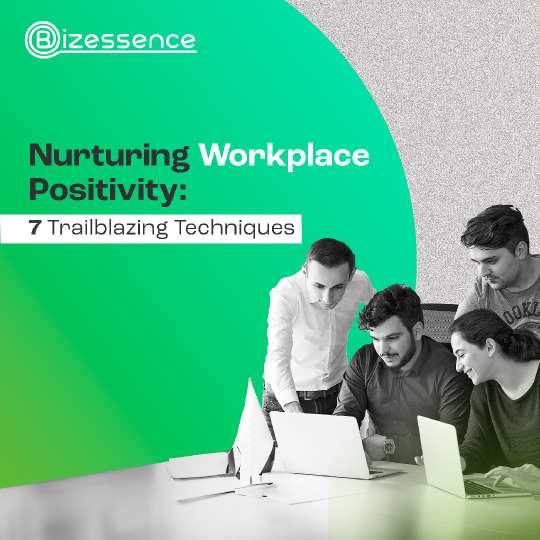
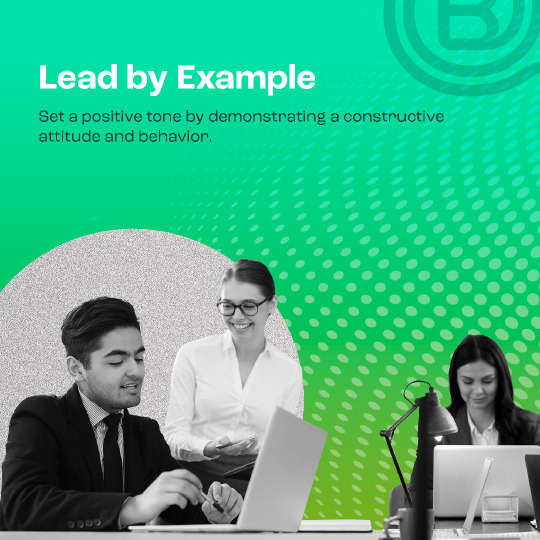



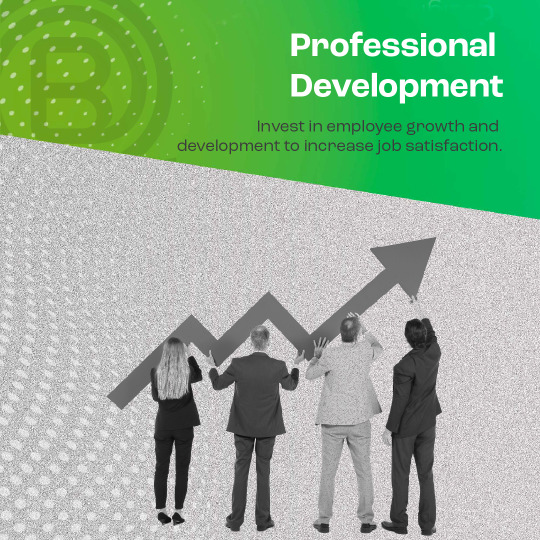
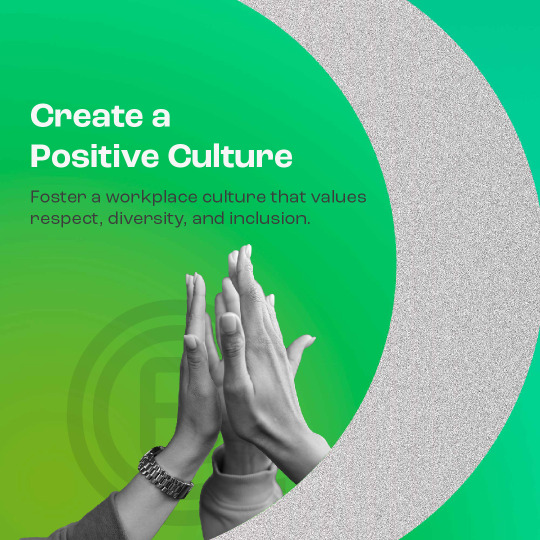
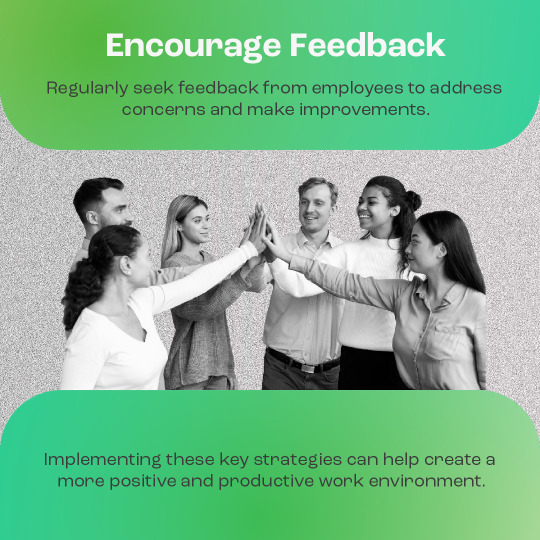

Step away from workplace negativity and embrace a vibrant, harmonious atmosphere. Uncover 7 pioneering strategies that champion positivity, elevate communication, and foster a culture of accomplishment within your workplace. Elevate your professional space to greater heights today!
#bizessence#leadershiptips#workplaceculture#teammorale#conflictresolution#effectivecommunication#professionaldevelopment#workplaceharmony#productiveenvironment#workplacepositivity
1 note
·
View note
Text
8 Proven Strategies for Building Powerful and Positive Relationships at Work
Building effective relationships with co-workers and superiors is critical to a harmonious and productive work environment. Strong professional relationships foster cooperation, communication and mutual support, enabling individuals and teams to achieve their goals more effectively. In this article, we’ll explore strategies and tips for establishing and nurturing positive relationships with colleagues and superiors.
#RelationshipsAtWork#PositiveWorkplace#BuildingConnections#TeamBuilding#WorkplaceHarmony#CommunicationSkills#Collaboration#EmpathyInBusiness
0 notes
Text
Workplace Conflict Resolution Services for Healthy Teams

Central HR’s workplace conflict resolution services are designed to promote healthy teamwork and communication. We help resolve conflicts quickly and effectively, ensuring your team remains engaged and productive. Trust us to handle all disputes with professionalism and care.
1 note
·
View note
Text
Streamlining Workplace Operations: The Importance of Standing Order Certification Services
In industrial and commercial establishments, maintaining clarity in employee conduct and organizational expectations is crucial. This is where Standing Orders come into play. These are formal rules that govern employee behavior, work conditions, and organizational procedures. The certification of standing orders ensures they align with statutory requirements and promote harmony in the workplace.

What Are Standing Orders?
Standing orders are a set of guidelines that define the terms of employment and standards of conduct for employees in industrial establishments. These orders, governed by the Industrial Employment (Standing Orders) Act, 1946, aim to:
Regulate the relationship between employers and employees.
Minimize conflicts by setting clear expectations.
Ensure compliance with labor laws and industrial regulations.
Every establishment employing a specified number of workers (as per local labor laws) is required to draft and certify its standing orders.
Why Are Standing Orders Important?
Clarity in Workplace Policies Standing orders outline policies regarding working hours, wages, leave, misconduct, disciplinary actions, and more. This clarity minimizes misunderstandings and disputes.
Legal Compliance Certified standing orders ensure that the organization's policies adhere to labor laws, protecting both the employer and employees from legal issues.
Conflict Resolution Clearly defined rules act as a reference point for resolving disputes, reducing the scope for ambiguity or bias.
Employee Confidence When policies are transparent and uniformly applied, employees feel secure and motivated, fostering a positive work environment.
What Are Standing Order Certification Services?
Standing Order Certification Services assist organizations in drafting, modifying, and certifying standing orders as per statutory requirements. These services ensure the standing orders are fair, compliant with labor laws, and customized to meet the specific needs of the organization.
Key Offerings of Standing Order Certification Services
Drafting Standing Orders
Creating a comprehensive document that covers all aspects of employment and workplace behavior.
Ensuring the language is clear, precise, and legally compliant.
Customizing Orders
Tailoring standing orders to suit the organization’s industry, operations, and workforce needs.
Addressing specific workplace scenarios while maintaining fairness.
Facilitating Certification
Submitting standing orders to the Certifying Authority for approval.
Liaising with authorities to address queries and ensure smooth certification.
Periodic Updates
Revising standing orders in response to changes in labor laws or organizational policies.
Ensuring the document remains relevant and compliant.
Employee Communication
Assisting in communicating the certified standing orders to employees.
Conducting awareness sessions to ensure employees understand and adhere to the policies.
Benefits of Standing Order Certification Services
Expert Guidance Professional services ensure that standing orders are comprehensive, legally sound, and industry-specific.
Time and Cost Efficiency Outsourcing the certification process saves organizations the time and effort involved in navigating legal complexities.
Reduced Workplace Disputes Certified standing orders act as a binding document, reducing the likelihood of conflicts and disputes.
Enhanced Employee Relations Transparent and fair standing orders build trust between employees and management, leading to improved workplace morale.
Statutory Compliance Ensuring compliance with labor laws protects the organization from penalties and legal challenges.
Steps in the Standing Order Certification Process
Drafting: Preparing the draft standing orders in consultation with management and employees.
Submission: Submitting the draft to the Certifying Authority (usually the Labor Commissioner).
Review and Modification: Addressing feedback or objections from employees and authorities.
Certification: Obtaining the final approval from the Certifying Authority.
Implementation: Circulating the certified standing orders to employees and ensuring adherence.
Conclusion
Standing orders form the backbone of a well-regulated and harmonious workplace. With the help of Standing Order Certification Services, organizations can ensure their policies are clear, fair, and legally compliant. These services not only simplify the certification process but also contribute to a positive work culture and reduced legal risks.
Looking for expert assistance with standing order certification? Contact us today to ensure your workplace policies meet legal standards and promote operational efficiency!
#StandingOrders#WorkplaceCompliance#LaborLaw#IndustrialEmployment#HRCompliance#LegalServices#EmployeeRelations#WorkplacePolicies#BusinessCompliance#EmploymentLaw#LaborRights#DisciplinaryPolicies#WorkplaceHarmony#HRServices#CertifiedStandingOrders
0 notes
Text
The Bonds That Build Us: Nurturing Relationships That Enrich Our Lives
What relationships have a positive impact on you? Introduction Life is a tapestry woven with relationships, each thread contributing to the patterns of our experiences. Among them, some relationships have an undeniable positive impact, shaping us into better versions of ourselves. These connections bring joy, support, and meaning to our lives, reminding us of the transformative power of genuine…

View On WordPress
#: PositiveRelationships FamilyLove FriendshipGoals Mentorship WorkplaceHarmony RomanticBond PersonalGrowth Happiness FamilyBonds F#dailyprompt#dailyprompt-2168
0 notes